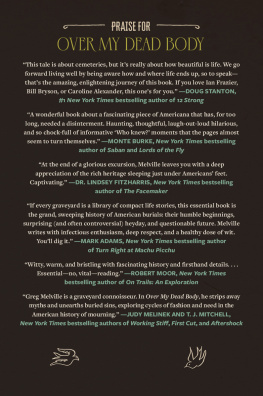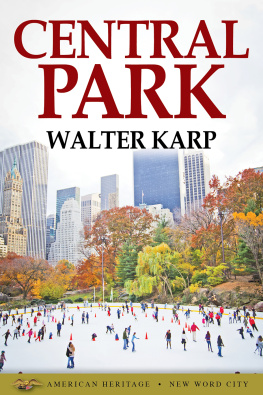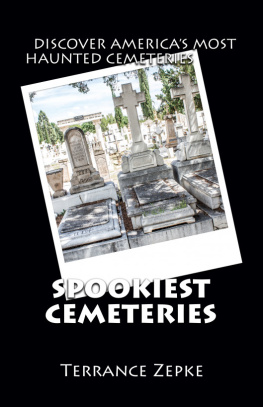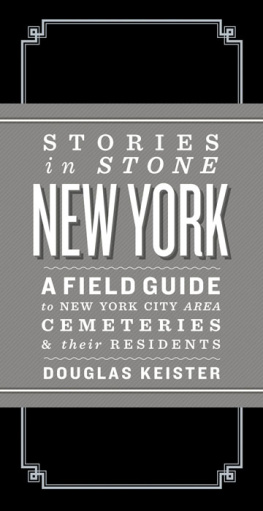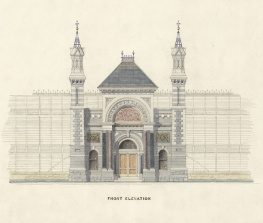Jessica Ferri started her career in publishing at FSG. Since 2009, shes been a freelance writer and her work has been published by the New Yorkers Page Turner blog, the Economist, NPR, Yahoo!, Bustle, Time Out New York, the Lineup, the Barnes and Noble Review, and the Daily Beast, where she is a regular contributor on books.
Jessica has always harbored a passion for the macabre, whether it be horror movies, cemeteries, true crime, haunted histories, or Charles Addams, and the list goes on. She launched Silent Cities (@silent_._cities) as a travelogue through Instagram, where she chronicled the incredible cemeteries shed visit along with their unique and largely forgotten stories. The project immediately garnered the interest of a niche but very dedicated community of people who are fascinated by cemeteries and the secrets they hold.
As a new mom, I found writing this book a daily battle, and it could not have been done without the support and encouragement of my husband, Graham Roberts. Many thanks and much love to my family: Mom, Rob, and Nick, Howard and Helen, for all your love and support, and for putting up with me the many times I said, Anybody interested in grabbing a couple of burgers and hitting the cemetery?
Thank you to Lisa Alpert at Green-Wood Cemetery, Susan Olsen at Woodlawn Cemetery, and Ferncliff president Kevin Boyd for your openness and generosity. Thank you to Columbia University Avery Library archivist Shelley Heyreh for her assistance with the Woodlawn archive.
Many thanks to Cailey Hall for being an excellent editor, reader, and friend. Childcare assistance from Bethany Saul, Kelsey Kinderkneckt, Caroline Grogan, and the wonderful teachers at ABC Child Center made it possible for me to work. Thank you to Paragraph Brooklyn, a fantastic writers space. To my friends and family who supported me and the Kickstarter campaign for the Silent Cities pilot, and to all our followers on Instagram, thank you Your support is everything.
Thank you to my agent, Katelyn Detweiler, for believing in my work and this book, to my editor Amy Lyons for bringing it into the world and my excellent production editor Kristen Mellitt for making it the best it could be. Thank you to my son, Roman. I love you. I love the way you say, Oh, wow! Look at this!
On a sunny summer morning, I rounded a corner path at Green-Wood Cemetery, on my way to see one of my favorite monuments. It was very early; the gates had just opened I wanted to get out there because it was already ninety-three degrees, and I was seven months pregnant.
The monument belongs to a girl named Charlotte Canda who was killed in a carriage accident coming home from her seventeenth birthday party in Manhattan in 1845. At this time of year Green-Wood lives up to its name: it was verdant throughout the cemetery, but particularly vibrant on the patch of land that belongs to Charlotte. Her ornate, Gothic-style memorial, recently cleaned, gleamed ghostly white against the bright green grass.
I have seen this memorial many times, in many different seasons. But as I came up the small hill this morning, short of breath, the effect of the cemeterys restorative efforts made the scene like something out of Romantic Poetry 101. Spears of sunlight fell onto the memorial through the trees, illuminating the angels that flank the canopy over Charlottes marble likeness. She stood, forever seventeen, with arms outstretched, like the Virgin Mary. The atmosphere can only be described as religious.
About to make her debut in society, Charlotte was passionate about music and art. She kept pet parrots and, as an amateur artist, had been at work on some sketches for a memorial for her aunt, who had recently died. Those sketches went into her own memorial at Green-Wood, which was commissioned by her grieving father and completed in 1848. Until the monument was finished, Charlotte rested at Saint Patricks Old Cathedral in Manhattan.
Nearly everything in Charlottes memorial is symbolic: it is seventeen feet high, seventeen feet long, and adorned by seventeen roses, representing each year of Charlottes brief life. There are musical instruments and, yes, there were Charlottes parrots, though 171 years of exposure to the elements have worn them down to little nubs. According to Green-Woods records, the monument cost Charlottes father $45,000, over $1 million adjusted for todays inflation.
Just one year after Charlotte died, her fianc, a young Frenchman named Charles Albert Jarett de la Marie, committed suicide. Because of his romance with Charlotte, their families wanted him to be buried with her, but his death being a suicide prevented him from being buried in consecrated ground. He was laid to rest under a tombstone bearing his familys coat of arms just adjacent to Charlottes memorial.
There was a time, in the late 1850s, when Charlottes memorial was one of the most visited places in New York. Visitors could purchase what was known as a carte de visite, an illustration of Charlottes memorial, and later a photograph, as a record of their visit. Charles Canda, Charlottes father, had a tablet commissioned with information on her backstory for the curious tourists who filed past for a glimpse. Though its text has worn away with the passage of time, the placard, which still stands, once read: Charlotte Canda: died suddenly by falling from a carriage on the night of the 3rd of February 1845 being the seventeenth anniversary of her birth day.
The sunny morning when I went to pay homage to Charlotte it was hard to imagine swarming crowds at this memorial or anywhere at Green-Wood. Although every day at Green-Wood is filled with countless stories waiting to be discovered, living visitors are scarce. There might be a passing funeral, or a stray birdwatcher. But Green-Wood Cemetery is gigantic. At 478 acres, it is just slightly smaller than Prospect Park, its neighbor to the north by a few blocks. This puts a considerable amount of space between visitors. In the warmer months, there is the steady hum of Green-Woods hardworking landscapers. Most of Green-Wood feels and sounds like some kind of outdoor cathedral instead of the center of a vast, bustling metropolis. It is disarmingly quiet.
Green-Wood Cemetery is one of the only places I can go to be completely alone with my thoughts. New Yorkers arent the only ones who know the buzzing drone of modern life. No matter the place, we are all well-acquainted with the cold glow of the smartphone, beckoning from the nightstand when we know we should be sleeping. And though the Victorians didnt have that itching feeling in their fingers when the batteries in their electronic devices died, they certainly needed a break from a rapidly changing world.
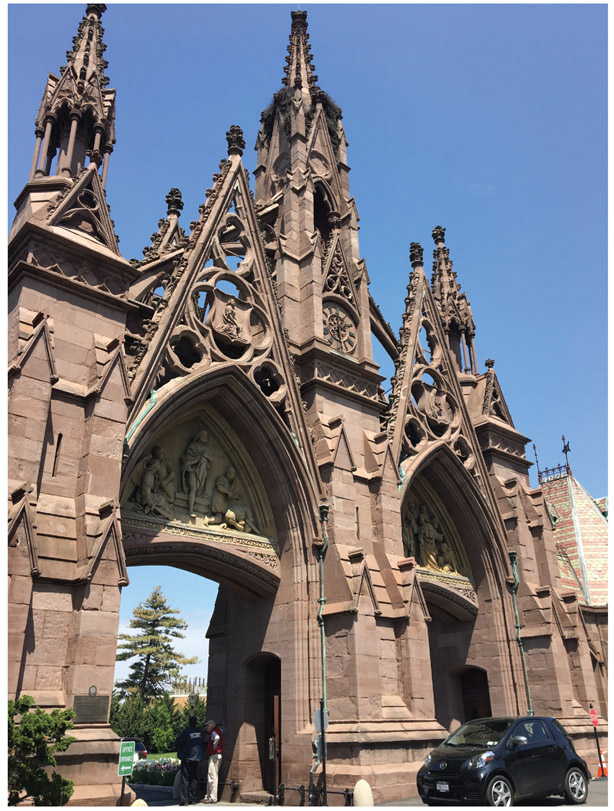
The simple explanation of how a place like Green-Wood came into existence is that cities needed a place outside of the city center because their churchyards were overflowing and they were concerned about the spread of disease. In 1832, cholera made landfall in North America, hitting New York City on June 26. Over 3,500 New Yorkers died, and another 80,000 fled the city. But the cemetery was more than just a solution to a sanitation problem. People were also looking for a respite from their daily scramble. And they found it in Americas first parks: cemeteries.
Green-Woods grandeur and beauty creates a sense of amnesia. Just as its founders hoped, I often forget Im in a cemetery. Passing through the Gothic gates is a transporting experience. As a teenager I was obsessed with Alfred Hitchcock movies and thrilled when I made the pilgrimage to Universal Studios to see the


